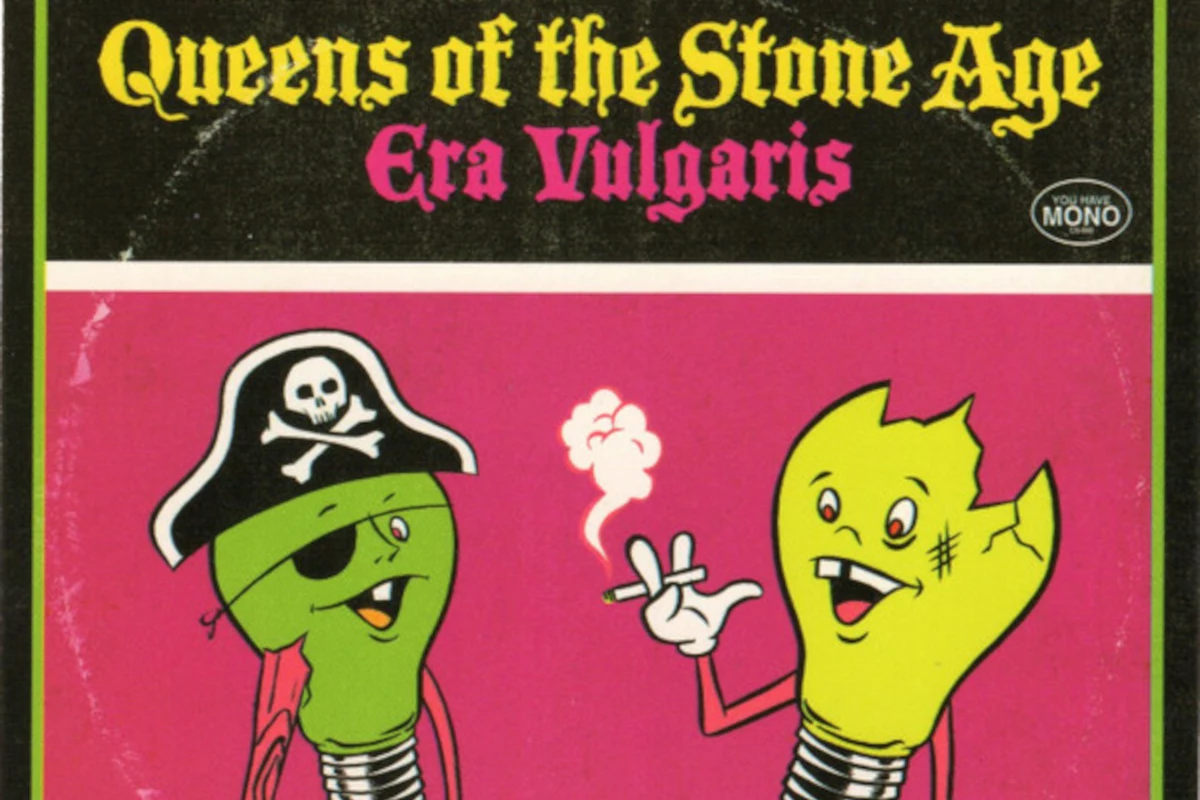When Stone Age Queens Got Filthy For “Era Vulgaris”

Josh Homme never took Queens of the Stone Age – or himself – too seriously, from stuffing a song full of drug names (“Feel Good Hit of the Summer”) to periodically letting former bassist Nick Oliveri scream his brains out (“You Think I Ain’t Worth a Dollar, but I Feel Like a Millionaire”). But for many followers, the band’s fifth album felt like an overt troll move.
After all, the Vulgar Era the cover features a pair of anthropomorphic, toothache blisters pasted under garish pink and yellow text; the lyrics are filled with low-meet-highbrow punch lines; and the musical aesthetic is as smoke-stained and cracked as the characters on the cover, built on barbaric drums and riffs that burn like, well, “Battery acid.” It’s like you can catch an STD by listening too loudly. (From the title, Latin for “the common era”, says Homme Fork its much simpler, more basic meaning: “It feels like ‘the vulgar era,’ which I like, because it sounds like something I’d like to be a part of.”)
But a more complicated truth is buried under the grime: instead of the discarded barn burner, there appears to be, Vulgar Era is an exploration, a labor of both sin and love – as nuanced, in a way, as the three previous masterpieces of Homme: To classify2002 songs for the deaf and 2005 Lullabies to paralyze. And it took a new level of patience to create.
Watch Queens of the Stone Age’s “Make It Wit Chu” Video
The band – at this point the core trio Homme (vocals, guitars, various other sounds), Troy Van Leeuwen (guitars, keyboards, bass) and Joey Castillo (drums, percussion), supplemented by various guests – has arrived at its first sessions in July 2006 without concrete direction. They also had no material, except for a planned reworking of “I Wanna Make It Wit Chu”, a 2003 track by Homme’s stoner rock collective, the Desert Sessions.
They hopped between three Los Angeles-area studios, their brains generating ideas as they went – a change in method from previous Queens albums. And it took time for the mood to crystallize: Chris Goss, who co-produced the record with Homme as The Fififf Teeners, said Uncut he “had seen him do this before with the Desert Sessions but never with Queens”, adding: “The Queens of the Stone Age is a company of which he is the CEO. It’s not the same thing.
“It was a long process,” Van Leeuwen said. suicidal girls. “It was the longest I’ve ever taken to make a record, frankly. I’ve made records in a year, but it was the first time I was totally focused for that long. It was the first times I’ve never done that – total focus for 10 months.”
Listen to Stone Age Queens’ “I’m Designer”
You can detect this fumbling feeling on Vulgar Era, which makes for an odd first listen: tracks like “Turnin’ on the Screw” and “I’m Designer” sound self-consciously primitive, relying on angular, robotic guitar riffs and one-liners that seem cobbled together from unused jokes. On the latter, Homme moves towards cynicism, reflecting on the concept of clearance sale: “Before the plan was to fuck the man / Now it’s to sleep with the man.” On the first, he sings in his usual sleazy-sexy style, “You’re not a has-been if you never were.” He also seems to arrive at the album’s mission statement: “Drawn inside a toilet on the wall / The world is round; my square does not fit at all.
But this atmosphere – dirty and blind, mechanical and vampiric – becomes alluring the longer you live in it. And Homme uses it to catalyze not only some of his heaviest riffs (the two-note grind of “Misfit Love”, the punk-flavored pounding of “Run, Pig, Run”) but also many of his finest melodies. (the showcase falsetto on the chorus of “In the Hollow”, the fuzzy din and harmonized croon of “Suture Up Your Future”, the woozy clean guitars of “River in the Road”).
Listen to “River in the Road” from Queens of the Stone Age
The experiment therefore paid off – although, without a single to rival the catchiness of “No One Knows” or “Little Sister”, the album faced a slight commercial setback, reaching only the 15th on the Billboard 200. Ultimately, the extended sessions caused Homme to rethink his future strategy: “I love this album, but I’ll never do another album like this again,” he said Uncut. “Or at least I don’t think I will.”
Despite the slight regret in hindsight, Homme ended up with the most unique project in his catalog – a moment where beauty and dirt never felt more intertwined. “I think the blisters [on the cover] are representative of what you perceive to be a great idea that really isn’t such a great idea,” Homme said in an official statement. album promotional video. “A light bulb always represents ideas. So, what is a completely ruined light bulb? »
Top 100 Classic Rock Artists
Click to find out how they rank, as we count down the top 100 classic rock artists.
